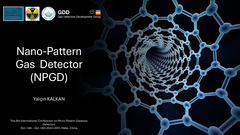Gas detectors are widely preferred in many research centers and industries, including CERN, due to their superior features such as rapid and sensitive detection, low radiation damage, and low cost. Currently, Gas Electron Multiplier (GEM) and Micromegas detectors are recognized in the literature as the most advanced members of the gas detector family. These microstructured gas-filled detectors excel in fast and precise radiation detection and offer longer operational lifespans in terms of radiation damage. Despite these advantages, these detectors, which typically have an internal volume of approximately 100 cm³ in standard sizes, require a continuous flow of gas. This gas mixture, usually consisting of a noble gas and a molecular gas of high purity, represents a significant cost factor. The operation of Micro-Pattern Gas Detectors (MPGDs) involves the consumption of substantial amounts of gas. Additionally, carbon dioxide (CO₂) is commonly used as the molecular gas in these detectors due to its low cost and abundance in nature. The environmental impact of this practice is frequently debated among the scientific community and closely monitored by CERN. This situation may lead to the future restriction of gas-filled detectors' usage, potentially eliminating the technological benefits they provide.
In comparison to microstructured gas detectors, a nanostructured gas detector has been designed and prototyped, capable of detecting radiation using significantly less gas mixture. Utilizing Anodic Aluminum Oxide (AAO) nanotube structures, a GEM-like design has been achieved. The nanostructured detector prototype, fabricated based on this design, has been characterized using a ⁵⁵Fe source. Detailed characterization results will be presented.




Comment submit